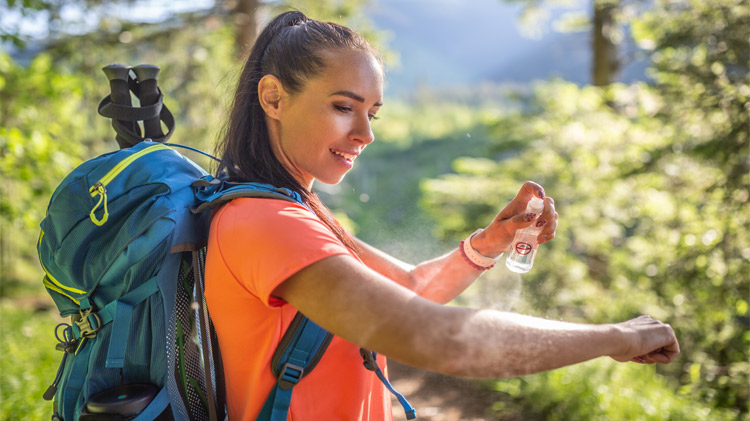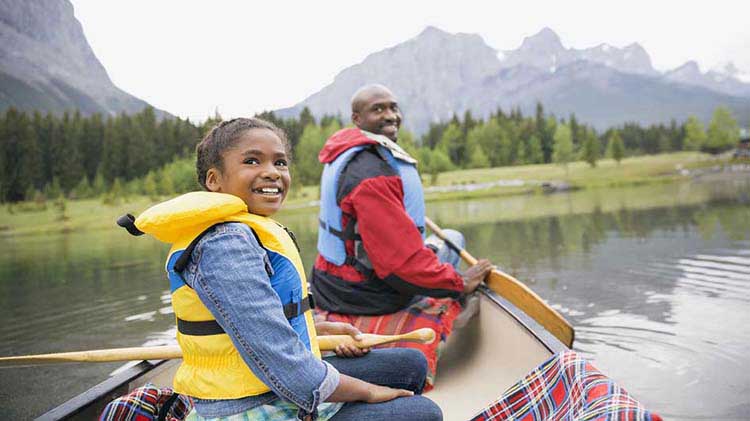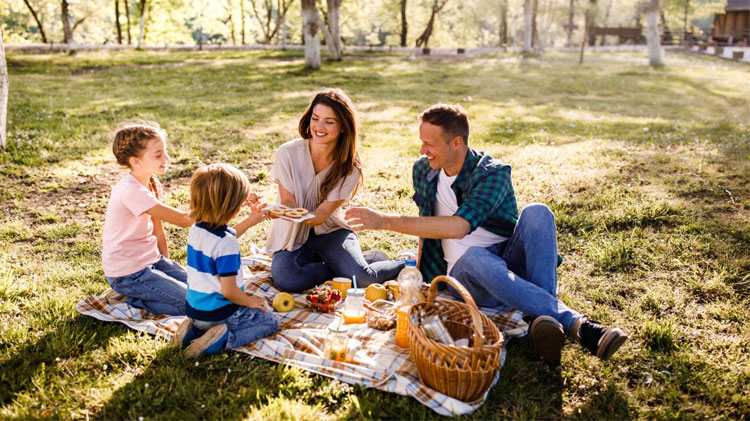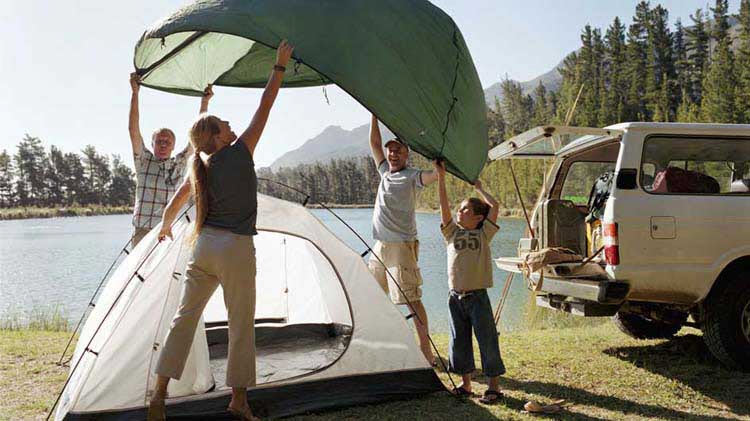How to prevent bug bites
Discover ways to help protect yourself, identify dangerous bug bites and stings and understand what to do if they bite you.
Spider and insect bites or stings can quickly suck the fun out of your outdoor recreation. Activities like going camping, cooking food on an outdoor grill or swimming can all lead to bug bites. Before you head outside, consider the following.
How to avoid bug bites
Here are some ideas to help prevent bug and insect bites:
- Wear protective clothing. Lightweight pants, a long-sleeved shirt, a hat, gloves, high socks and closed-toe shoes can help provide protection when working or playing outside, camping, or even when working inside crawl spaces or infested areas.
- Remove wasp nests. Have a professional remove wasp nests close to your home or other living areas.
- Install screens. Install tight-fitting window and door screens to keep insects from getting inside your home.
- Use bed nets. If sleeping outdoors, you can hang a bed net treated with pyrethroid insecticide over your sleeping area to help reduce mosquito interactions.
- Use repellant. According to label directions, it’s recommended to apply insect repellent to your clothing and skin before going outside. Natural and essential oils can be used as insect repellent and help you avoid chemical exposure. Lavender, lemongrass and thyme are other choices for keeping chiggers, fleas, mosquitos and ticks away. Basil, clove, eucalyptus, lavender and peppermint help keep flies away, as well.
- Eliminate standing water. Mosquitoes can breed in tiny amounts of water, so try to regularly dump or drain tires, gutters, birdbaths, wheelbarrows, toys, pots and planters.
- Grow plants that repel insects. Certain plants, including marigolds, chrysanthemums, lavender and floss flowers, are able to help ward off bugs. Similarly, herbs such as basil, mint and rosemary help repel a broad spectrum of insects.
- Use candles or burn herbs. Citronella smoke repels mosquitoes and other insects. Also, burning sage or rosemary over coals can help repel mosquitoes.
- Add a bat house to your yard or home. One small brown bat can eat hundreds of mosquitoes.
- Limit fragrances. Bugs may be attracted to the smells coming from your perfume, cologne or lotion.
Types of bugs
Common bugs
These may not seem like dangerous insects at first glance, but they can transmit disease, trigger allergies or become nuisances, so read on to understand what you’re up against.
- Mosquitoes are well known for their itchy bites, but a more severe consequence may include the contraction of diseases and viruses like the Zika virus, malaria and the dengue virus.
- Honey bees have stings that can cause moderate pain but more worrisome interactions occur if you are allergic. If you’re unsure if you’re allergic, stay alert after a sting for symptoms like hives, itching, swelling or difficulty breathing.
- Ticks are wingless brown or reddish-brown arthropods typically found in grassy, brushy or wooded areas. They may carry Lyme disease, cause allergic reactions or heighten your risk of infection.
Dangerous bugs that bite or sting
Steer clear of insects with bright, contrasting patterns like black and yellow, red or orange, as these colors often reveal them as venomous or poisonous. Here are a few to watch out for.
- Brown recluse spiders can be ¼ to ¾ inch long and have violin-shape markings on their bodies.
- Black widow spiders are about 1½ inches long and typically have red, hourglass-shape markings on the abdomen.
- Wasps, which include yellow jackets and hornets, can be identified by a black and yellow or brown-red color pattern.
- Africanized honey bees look like regular honey bees but tend to swarm their targets with hundreds of stings.
- Red fire ants are less than ¼ inch long and red-brown in color. They will bite and sting repeatedly if their colony is threatened.
Bug bite treatment
Watching for allergic reactions and treating bites and stings immediately is important. Many bites go away on their own but here are a few ways to help treat them.
- Move to a safe area. Try to move away from the location of the incident to help reduce the risk of additional bites or stings.
- Remove the stinger. Some wasp and bee stings require removing the stinger from the area, if possible. Using your fingernail to scrape the skin is usually sufficient to remove the stinger.
- Cleanse thoroughly. Wash spider and mosquito bites with soap and water, and wash tick-affected areas with an antiseptic such as rubbing alcohol.
- Elevate the area. If arms or legs are affected, elevating the area can help reduce swelling.
- Apply a cool compress. Applying a cool compress or ice to the bite can also help reduce swelling and may subdue itchiness.
- Apply a cream or other treatment. Some pain relievers and lotions such as hydrocortisone cream, calamine lotion or a baking soda paste may help. An antihistamine might also help reduce itching.
- Seek immediate medical care if allergic. Even if your reaction seems minor, consider contacting your doctor. Call 911 or your local emergency number if symptoms include difficulty breathing, swelling of lips, eyelids or throat, dizziness, rapid heartbeat, hives, nausea or seizures.
- Call Poison Help if issues persist. If you suspect the bite or sting may be poisonous or don’t have allergies and are experiencing unusual symptoms such as dizziness, hives, trouble breathing or swelling around the eyes and mouth, it's crucial to take action. Call Poison Help (1-800-222-1222) to connect with your local poison center.
Dealing with a slightly larger pest? Check out some of our DIY tips for pest management and wildlife control.




